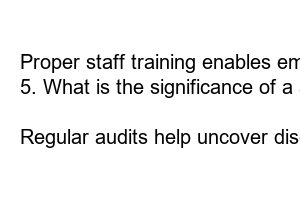CU 편의점 재고확인
Title: Streamlining CU Convenience Store Inventory Check for Better Efficiency
Introduction:
Convenience stores have become an integral part of our fast-paced lifestyles, offering a wide range of products and services. To ensure smooth operations, **accurate inventory management** is vital. In this blog post, we explore the **importance of inventory checks** in CU convenience stores and ways to optimize the process for enhanced efficiency.
1. Understanding the Significance of Inventory Checks
Regular inventory checks help maintain **adequate stock levels**, prevent overstocking or stockouts, and minimize financial losses. These checks enable store owners to identify and address **shrinkage** (loss of inventory due to shoplifting, employee theft, or administrative errors) and reduce waste.
2. Automating Inventory Checks with Barcode Scanner Systems
By deploying advanced **barcode scanning systems**, convenience store owners can streamline the inventory management process. These systems use **RFID technology** to accurately track, record, and update product information, making it easier to monitor stock levels, identify discrepancies, and take immediate action.
3. Embracing Real-Time Data Analysis
The integration of **real-time data analysis** tools can significantly enhance inventory management. Through **cloud-based software** solutions, store owners can constantly monitor their inventory, identify **fast-moving items**, track sales trends, and make data-driven decisions promptly. This ensures the availability of popular products and minimizes waste due to slower-moving items.
4. Optimizing Staff Training for Inventory Management
Training store staff on **proper inventory management** techniques is crucial for maintaining an organized and efficient system. Staff should be educated on inventory counting methods, usage of scanners, and understanding **product codes**. Implementing effective training programs enables employees to contribute actively to maintaining accurate inventory levels.
5. Implementing a Stock Replenishment Strategy
Implementing a well-defined **stock replenishment strategy** allows for timely restocking of high-demand items to minimize product shortages. Establishing **minimum stock levels** for each product and regularly reviewing and adjusting these levels ensures seamless operations without any disruption in customer service.
6. Prioritizing Cleanliness and Organization
An organized store layout along with proper shelf labeling greatly simplifies the inventory check process. Identifying **low stock levels** and out-of-stock items becomes easier in a clean and clutter-free environment. Implementing **visual merchandise displays** and clearly labeling each product helps staff to easily locate and restock items.
7. Conducting Regular Inventory Audits
Regularly conducting **inventory audits** is essential to maintain accuracy and identify any discrepancies. By comparing physical stock counts with recorded figures, store owners can uncover issues such as expired products, misplacement, or theft. These audits provide an opportunity to reassess inventory management processes and make necessary adjustments for better efficiency.
Summary:
Efficient CU convenience store inventory checks are vital for ensuring smooth operations, reducing waste, and maximizing profits. By embracing automation, leveraging real-time data analysis, and implementing robust training programs, store owners can streamline the inventory management process. Prioritizing cleanliness, organization, and regular inventory audits helps maintain accurate stock levels and enhances customer satisfaction. By implementing these strategies, CU convenience stores can optimize their inventory checks and improve overall efficiency.
FAQs:
1. Why are inventory checks important for CU convenience stores?
Inventory checks help maintain adequate stock levels, prevent losses, and reduce waste.
2. How can barcode scanning systems help optimize inventory management?
Barcode scanning systems accurately track product information, streamlining inventory management processes.
3. What is the role of real-time data analysis in inventory management?
Real-time data analysis tools help monitor stock levels, track sales trends, and make data-driven decisions promptly.
4. How does staff training contribute to efficient inventory management?
Proper staff training enables employees to actively contribute to maintaining accurate stock levels and streamline inventory checks.
5. What is the significance of a stock replenishment strategy?
Implementing a stock replenishment strategy ensures timely restocking of high-demand items, minimizing product shortages.
6. How do regular inventory audits improve efficiency?
Regular audits help uncover discrepancies, identify issues, and provide an opportunity to reassess and optimize inventory management processes.

